 United Kingdom (1891)
United Kingdom (1891)HMS Edgar, Endmyon, Hawke, Gibraltar, Crescent, Royal Arthur, St Georges, Theseus, Grafton
WW1 RN Cruisers
Blake class | Edgar class | Powerful class | Diadem class | Cressy class | Drake class | Monmouth class | Devonshire class | Duke of Edinburgh class | Warrior class | Minotaur classIris class | Leander class | Mersey class | Marathon class | Apollo class | Astraea class | Eclipse class | Arrogant class | Highflyer class
Pearl class | Pelorus class | Gem class | Forward class | Boadicea class | Blonde class | Active class | Bristol class | Weymouth class | Chatham class | Birmingham class | Birkenhead class | Arethusa class | Caroline class | Calliope class | Cambrian class | Centaur class | Caledon class | Ceres class | Carlisle class | Danae class | Cavendish class | Emerald class
Among the oldest cruisers in British service
Pre-1890s cruisers were often sail/steam thing intended to safeguard the immense colonial trade roads of the Empire. By 1890s the concept of protected cruiser was well accepted as more “military” ships compared to 3rd rate ones, barely better than enlarged gunboats, but still cheaper than armoured cruisers.
Born from the 1889 program, these 9 cruisers were smaller versions of the Blake (1890),yet with the same protection and armament. Machinery was reduced and the tonnage lower by 1800 tons. However these new steam engines gave 20 knots and had a better range of 10,000 nautical miles. Tests proved their great endurance. These ships could sustain 18 knots for 48 hours. They also had better seaworthiness in bad weather and were well suited for the north sea, although intended as local “capital ships” for distant stations.
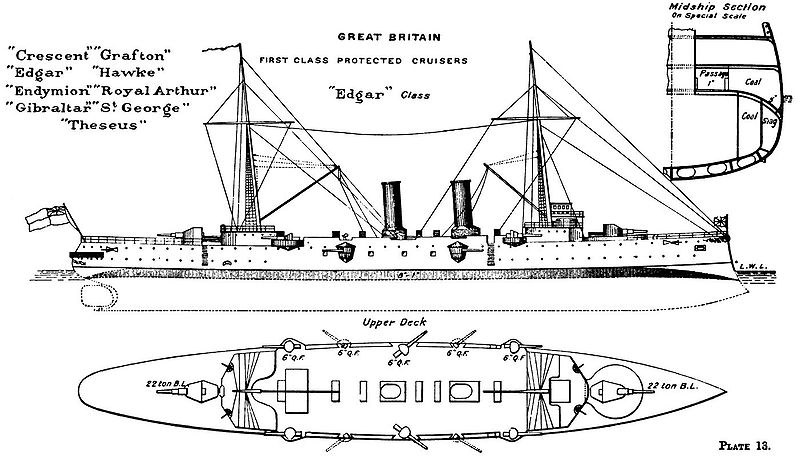
Edgar class cruiser – Brasseys Diagram of 1897
Four units, the HMS Gibraltar, Crescent, Royal St Georges, Royal Arthur were built by using large amounts of wood and copper for their (tropical) service overseas. The Royal Arthur and Crescent were slightly different, having both a raised forecastle, improving living quarters and holding heavy weather. Heavier by 350 tonnes, they also had two 152 mm guns at the front instead of a single heavy 234 mm gun in the axis as their sister ships.
A long service worldwide for the King and country
These ships began their careers in distant stations, Hong Kong, the East Indies, the Mediterranean, South Africa, Australia and the Pacific; Their career was more or less active during the Great War:
HMS Crescent was part the 10th cruiser squadron in 1914, patrolling in the north sea. In February 1915, she was assigned to the defense of Hoy. In November, she was disarmed and converted into an anchored tanker in Hoy. She then joined Rosyth to be reformed in 1918.
HMS Edgar operated together with other units of the same class with the 10th squadron operating in the North of Scotland. In November-December 1914, her heavy guns were removed to be given to the new monitors. She was then kept at anchor, and later rearmed with 12x 152 mm guns and fitted with large side ballasts in order to carry out bombing missions on the Flemish coast. In May 1915, she was transferred to the Dardanelles and served there until 1918, date of retirement.
HMS Endymion was assigned to the 10th Wing also in 1914. she was then disarmed, rearmed and equipped with ballasts like the Edgar to serve in Flanders, but was transferred instead to the Dardanelles. She then served in the Aegean Sea and was decommissioned in 1920.
 HMS Gibraltar served with the 10th Cruiser Squadron. In March 1915 she was disarmed and anchored to the Shetland Swarbacks Minns islands to serve as tanker for the 10th fleet, starting in June 1915. She was then sent to Portland to be assigned to a diving school. She then became a destroyers supply ship from 1919 to 1922.
HMS Gibraltar served with the 10th Cruiser Squadron. In March 1915 she was disarmed and anchored to the Shetland Swarbacks Minns islands to serve as tanker for the 10th fleet, starting in June 1915. She was then sent to Portland to be assigned to a diving school. She then became a destroyers supply ship from 1919 to 1922.
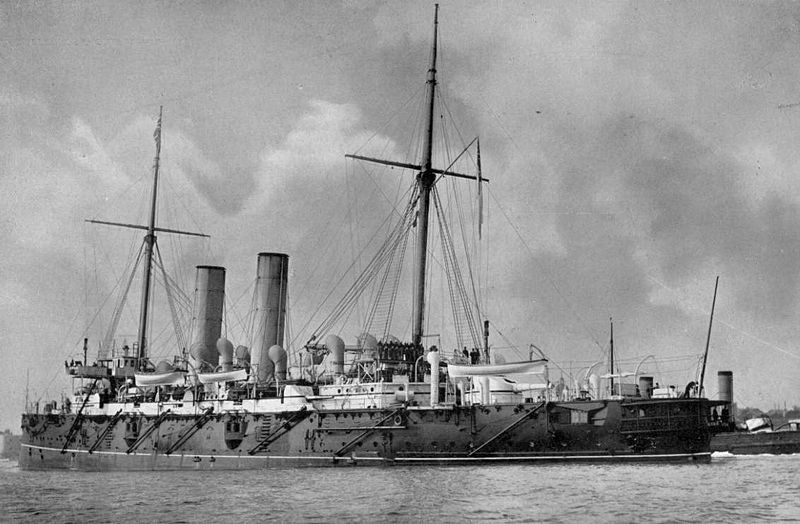
HMS Gibraltar
HMS Hawke served with the 10th squadron, North Sea, in 1914. She narrowly escaped sinking after a collision with the large liner SS Olympic. She lost her bow and was repaired but its spur was removed during reconstruction. She served from 1908 to 1913 in Portsmouth, after being briefly a training ship for cadets. She was torpedoed in mission on October 15, 1914 by the U9 and sank with 524 hands.
HMS Royal Arthur was detached to the 10th squadron in 1914. In February 1915, she was reduced as a submarine supply ship, a role she held until 1919 in Scapa Flow. She witnessed arrival of the great Hochseeflotte and was later disarmed.
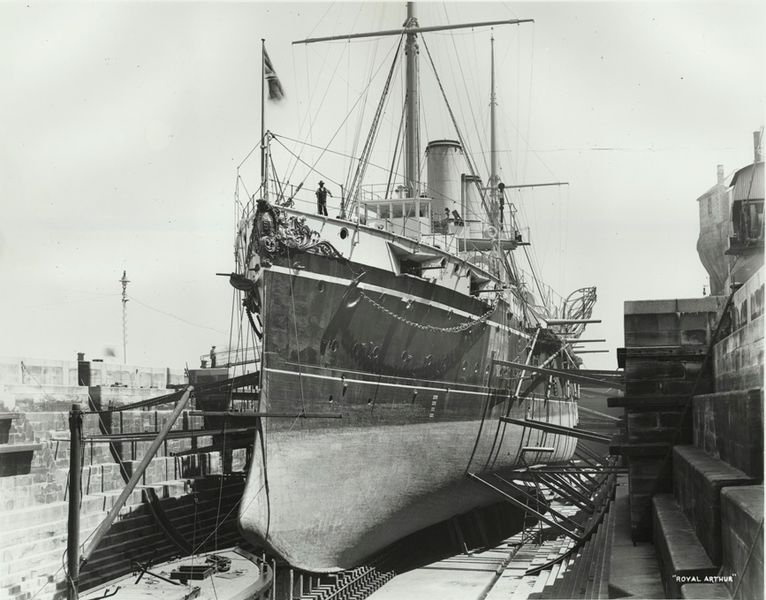
HMS Royal Arthur in Sydney drydock
HMS St George was put in reserve, having served for the training of sailors student, in 1906. She also served as a supply ship, and was converted to Chatham for that very purpose from 1909. She served with the 9th flotilla of destroyers in November 1914, and later for patrols in the Humber. In 1917 she was converted into an armed tanker for submarines, and sent in the Mediterranean. She served in the Aegean Sea in 1918-19 with the second flotilla and was retired in 1920.
HMS Theseus served as tanker HMS Cambridge from 1905 in Devonport. In 1914 she was affected to the 10 squadron operating in the North of Scotland, and then was transformed in early 1915, rearmed with 152mm guns and fitted with ballasts to operate in Flanders. She was then sent to the Dardanelles and served in the white sea in 1916, before returning to the Aegean to serve as tanker, then the Black Sea in support of the “white” Russians. She was retired in 1920.
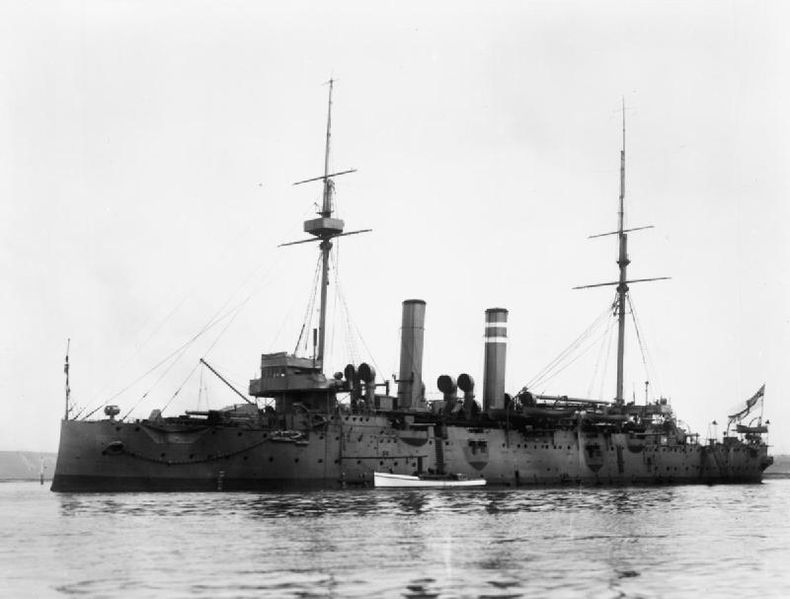
HMS Grafton in wartime livery.
Links
The Edgar class on wikipedia
Specs Conway’s all the world fighting ships 1860-1905.
St Vincent specifications
Gallery
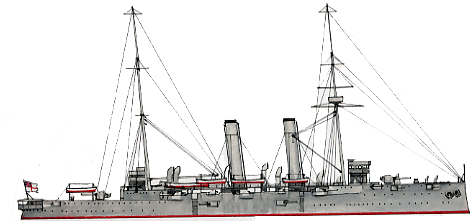
HMS Edgar illustration in 1914 (notice the raised forecastle).
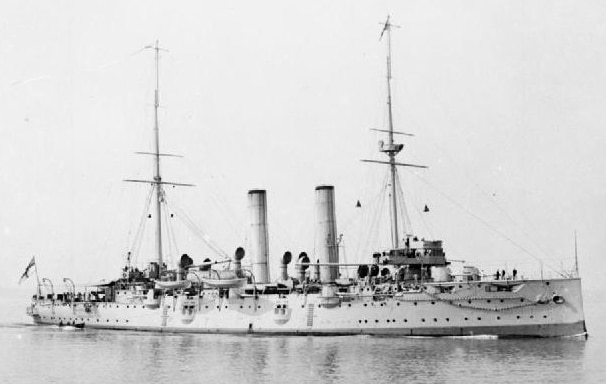
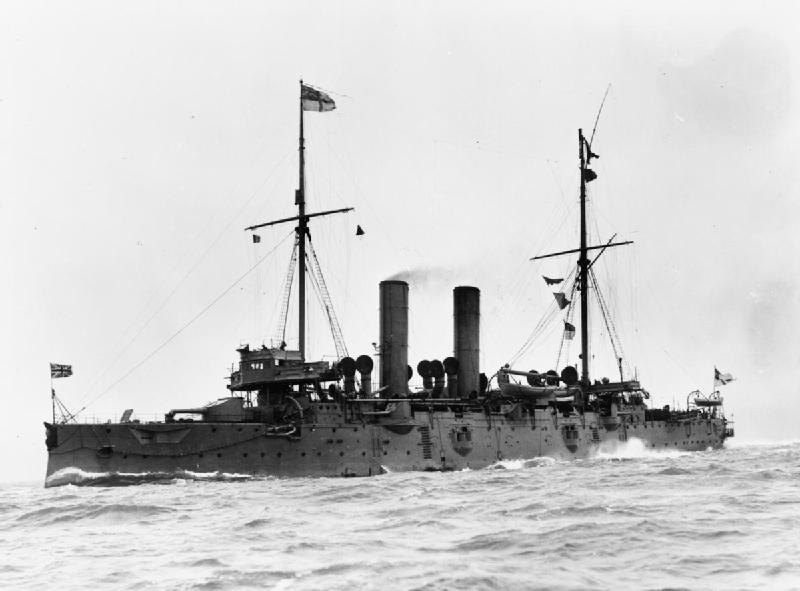
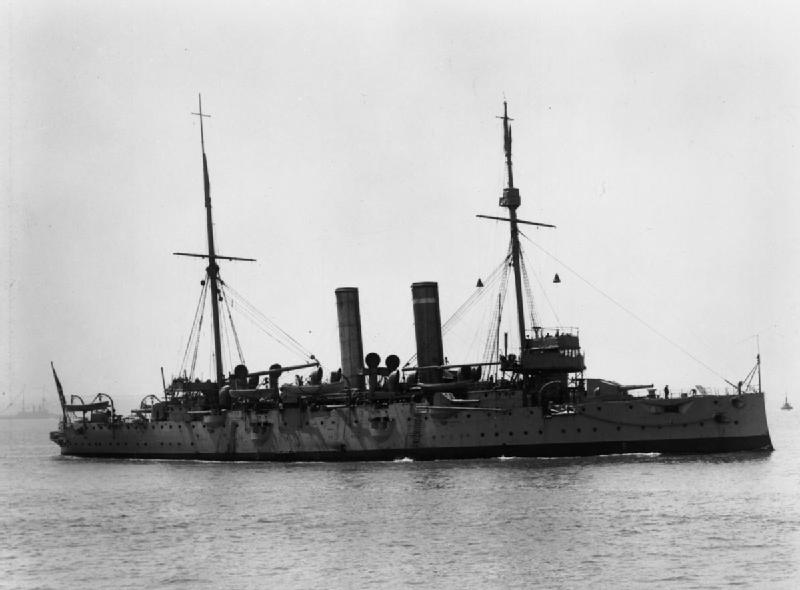
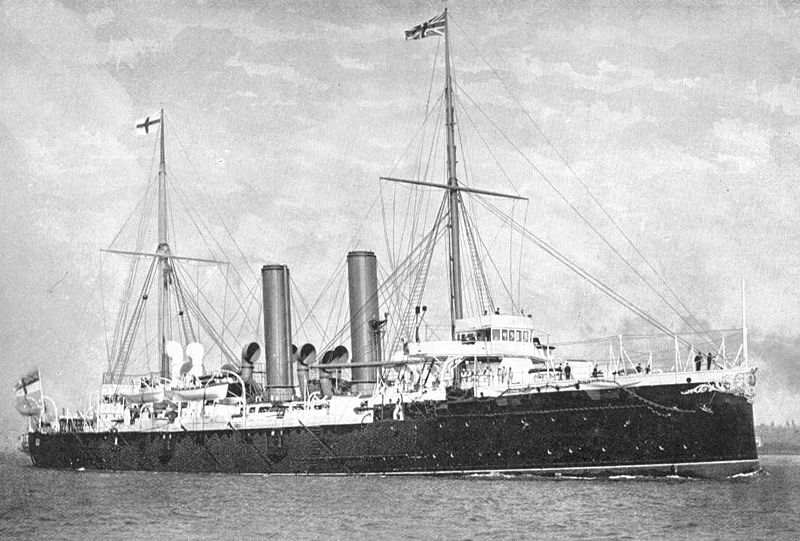
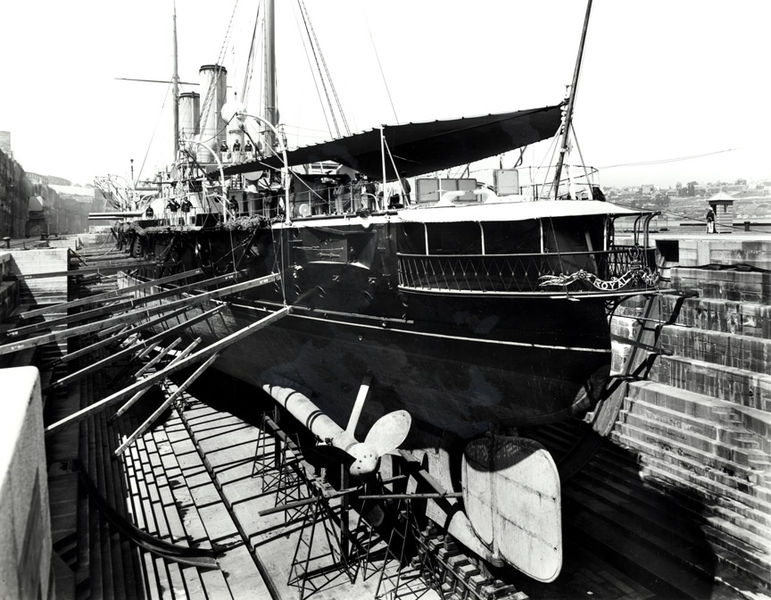
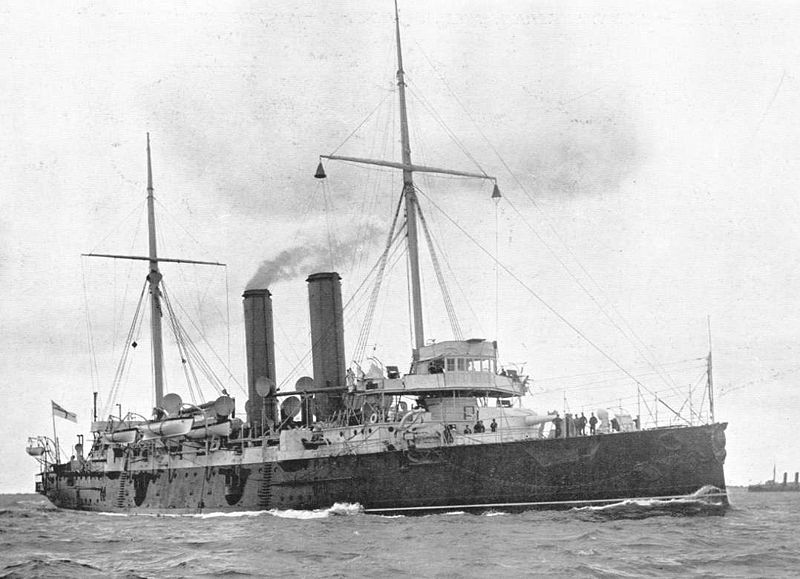
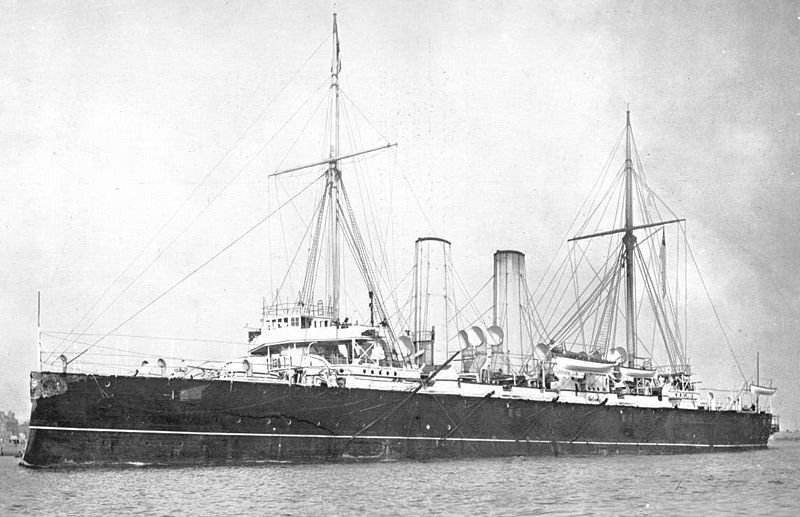

 Latest Facebook Entry -
Latest Facebook Entry -  X(Tweeter) Naval Encyclopedia's deck archive
X(Tweeter) Naval Encyclopedia's deck archive Instagram (@navalencyc)
Instagram (@navalencyc)





 French Navy
French Navy Royal Navy
Royal Navy Russian Navy
Russian Navy Armada Espanola
Armada Espanola Austrian Navy
Austrian Navy K.u.K. Kriegsmarine
K.u.K. Kriegsmarine Dansk Marine
Dansk Marine Nautiko Hellenon
Nautiko Hellenon Koninklije Marine 1870
Koninklije Marine 1870 Marinha do Brasil
Marinha do Brasil Osmanlı Donanması
Osmanlı Donanması Marina Do Peru
Marina Do Peru Marinha do Portugal
Marinha do Portugal Regia Marina 1870
Regia Marina 1870 Nihhon Kaigun 1870
Nihhon Kaigun 1870 Preußische Marine 1870
Preußische Marine 1870 Russkiy Flot 1870
Russkiy Flot 1870 Svenska marinen
Svenska marinen Søværnet
Søværnet Union Navy
Union Navy Confederate Navy
Confederate Navy Armada de Argentina
Armada de Argentina Imperial Chinese Navy
Imperial Chinese Navy Marinha do Portugal
Marinha do Portugal Mexico
Mexico Kaiserliche Marine
Kaiserliche Marine 1898 US Navy
1898 US Navy Sovietskiy Flot
Sovietskiy Flot Royal Canadian Navy
Royal Canadian Navy Royal Australian Navy
Royal Australian Navy RNZN Fleet
RNZN Fleet Chinese Navy 1937
Chinese Navy 1937 Kriegsmarine
Kriegsmarine Chilean Navy
Chilean Navy Danish Navy
Danish Navy Finnish Navy
Finnish Navy Hellenic Navy
Hellenic Navy Polish Navy
Polish Navy Romanian Navy
Romanian Navy Turkish Navy
Turkish Navy Royal Yugoslav Navy
Royal Yugoslav Navy Royal Thai Navy
Royal Thai Navy Minor Navies
Minor Navies Albania
Albania Austria
Austria Belgium
Belgium Columbia
Columbia Costa Rica
Costa Rica Cuba
Cuba Czechoslovakia
Czechoslovakia Dominican Republic
Dominican Republic Haiti
Haiti Hungary
Hungary Honduras
Honduras Estonia
Estonia Iceland
Iceland Eire
Eire Equador
Equador Iran
Iran Iraq
Iraq Latvia
Latvia Liberia
Liberia Lithuania
Lithuania Mandchukuo
Mandchukuo Morocco
Morocco Nicaragua
Nicaragua Persia
Persia San Salvador
San Salvador Sarawak
Sarawak Uruguay
Uruguay Venezuela
Venezuela Zanzibar
Zanzibar Warsaw Pact Navies
Warsaw Pact Navies Bulgaria
Bulgaria Hungary
Hungary

 Bundesmarine
Bundesmarine Dutch Navy
Dutch Navy Hellenic Navy
Hellenic Navy Marina Militare
Marina Militare Yugoslav Navy
Yugoslav Navy Chinese Navy
Chinese Navy Indian Navy
Indian Navy Indonesian Navy
Indonesian Navy JMSDF
JMSDF North Korean Navy
North Korean Navy Pakistani Navy
Pakistani Navy Philippines Navy
Philippines Navy ROKN
ROKN Rep. of Singapore Navy
Rep. of Singapore Navy Taiwanese Navy
Taiwanese Navy IDF Navy
IDF Navy Saudi Navy
Saudi Navy Royal New Zealand Navy
Royal New Zealand Navy Egyptian Navy
Egyptian Navy South African Navy
South African Navy






























 Ukrainian Navy
Ukrainian Navy dbodesign
dbodesign